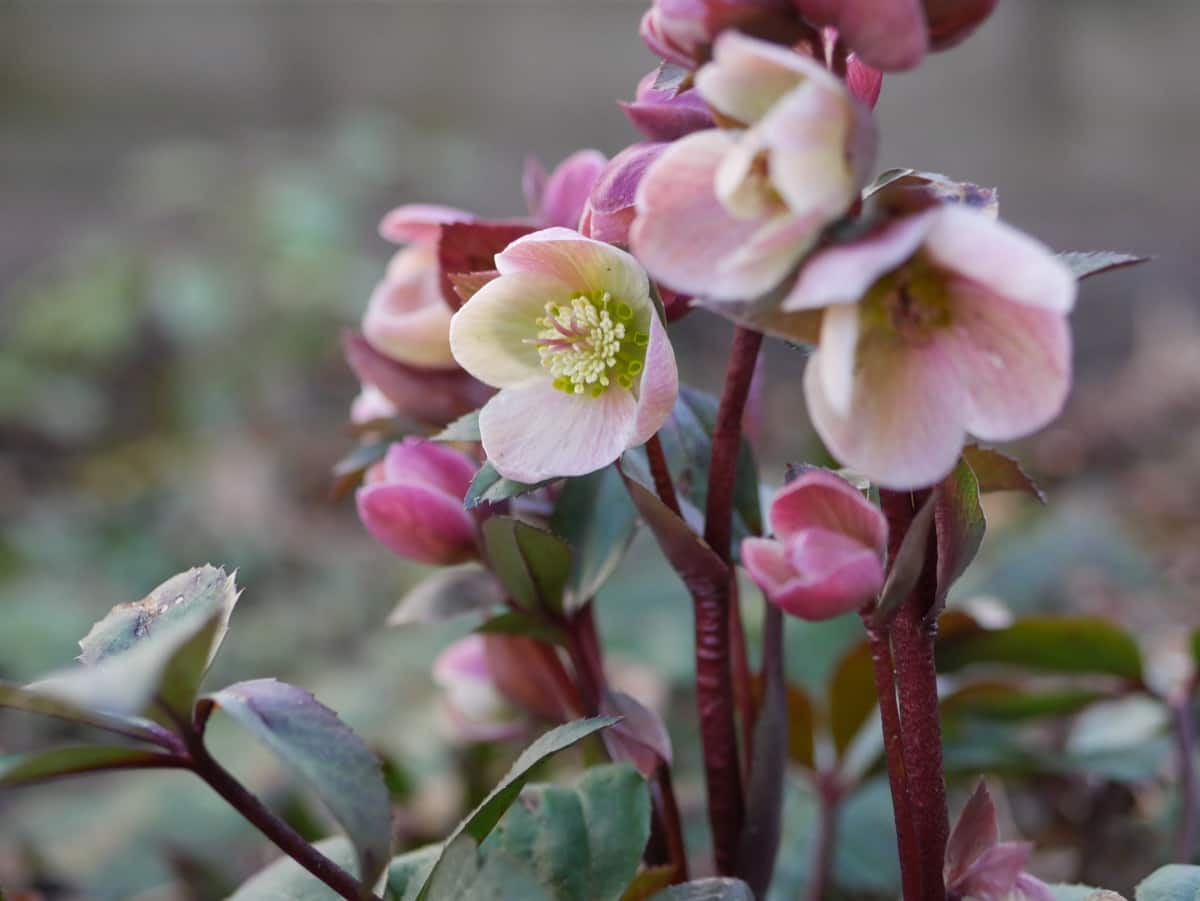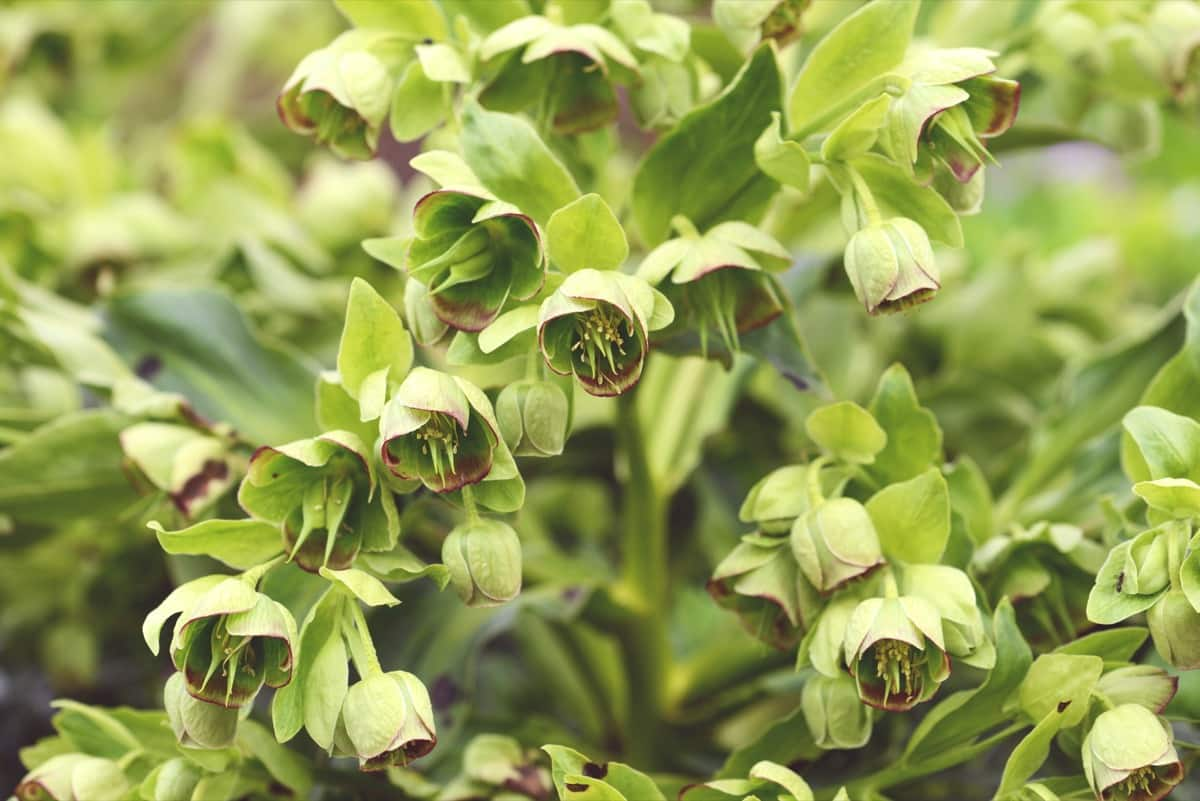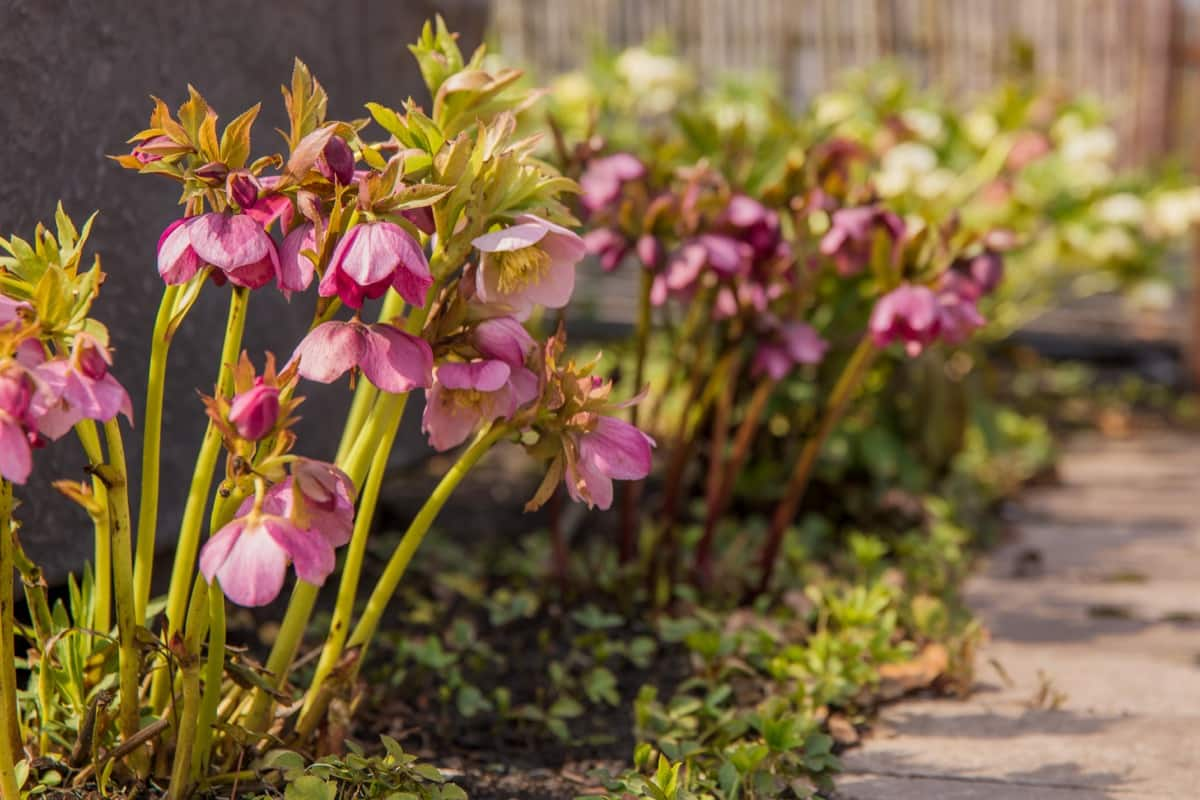Hellebores are beautiful and low-maintenance plants that can add a touch of elegance and beauty to any garden. Hellebores are charming plants that will brighten up any shaded garden area. Growing and caring for Hellebore plants is a rewarding experience that yields beautiful blooms year after year.

How to Grow and Care for Hellebore Plants
Soil Requirement for Hellebore Plant Growth
- Hellebores are easy-to-grow plants that prefer shady areas with well-draining, loamy soil. The ideal soil type for Hellebores is loamy soil that is moist but well-draining. This means the soil should be able to hold moisture without becoming waterlogged.
- It’s also important to ensure that the soil’s pH level falls within the range of 7.0-8.0 for healthy Hellebore plant growth.
Choosing The Right Location for Hellebore Plant Growth
- Choosing the right location for Hellebore plant growth ensures healthy and vibrant blooms. They thrive in areas with dappled sunlight, such as under trees or shrubs.
- Make sure to choose an area that provides good drainage.
- It’s also important to consider the temperature of the location you select for your Hellebore plants. While cold-tolerant, they still need protection from extreme temperatures and frost during winter.
Hellebore Propagation Methods
- Hellebores are popular with many gardeners due to their attractive appearance and ease of care. These Hellebore plants can be propagated in two ways – by division or seed.
- Propagation by division involves separating the plant’s root system into smaller sections, each with its stem and leaves, which can then be replanted. This method is best done in early spring when the plant comes out of dormancy.
- Propagation by seed involves collecting Hellebore seeds once they have matured on the plant. The seeds should be sown immediately as they tend to lose viability quickly. When planting Hellebore seeds, it’s important to remember that these plants prefer well-drained soil and partial shade. Additionally, it may take up to two years for the seeds to germinate fully.
Understanding Hellebore Plant’s Water and Moisture Requirements
- Hellebore plants require consistent and adequate watering to thrive. These plants prefer consistently moist soil, but it is important not to overwater them as they can be susceptible to root rot. It is best to water Hellebores deeply once a week during the growing season rather than giving them frequent light watering. This will encourage deep plant root growth and help the plant withstand drought.
- It is important to note that Hellebores do not tolerate standing in waterlogged soil for long periods. If you have heavy clay soil or an area with poor drainage, adding organic matter such as compost or peat moss can improve drainage and create a more suitable environment for your Hellebores.
- If you live in an area with hot summers, providing some shade for your Hellebore plants may also be necessary to prevent stress from heat and lack of moisture. By understanding the specific watering needs of your Hellebore plant and making adjustments accordingly, you can ensure healthy growth and beautiful blooms year after year.
Protecting Hellebore Plants from Extreme Temperatures and Frost
- Hellebore plants are generally hardy and can tolerate cold temperatures, but they still require protection from extreme weather conditions. During winter, it’s essential to protect them from frost. One of the best ways to do this is by mulching your Hellebores with a layer of straw or leaves.
- If you live in an area that experiences harsh winters, you may want to consider covering your Hellebores with burlap or frost cloth. This will create a barrier between the plant and the cold air, protecting it from damage.
- It’s also important not to let your Hellebores dry out during winter, as this can cause stress on the plant and make them more susceptible to frost damage. Make sure to water them thoroughly before freezing temperatures arrive.
- In addition to winter care, the summer heat can damage Hellebore plants. To protect them from extreme heat, provide some shade during hot afternoons or install a watering system that sprays mist over the foliage.
In case you missed it: How to Grow and Care for Cosmos Flowers: Planting Instructions for Beginners

Hellebore Plant Maintenance: Pruning and Deadheading Techniques
- Proper pruning and deadheading are essential maintenance techniques for ensuring the longevity of your Hellebore plants. Deadheading removes spent blooms to encourage new growth and prevent seed formation, which can drain the plant’s energy. It’s best to do this when the flower petals are starting to wilt.
- Pruning, on the other hand, involves cutting back old foliage in late winter or early spring before new growth appears. This helps reduce disease transmission and makes way for fresh leaves that provide better air circulation around the base of your plants.
- In addition to regular pruning and deadheading, Hellebores may also require occasional grooming throughout their growing season. This means removing damaged or diseased leaves and tidying up any yellowing foliage.
Identifying and Treating Pests and Diseases in Hellebore Plants
- Hellebore plants are generally pest and disease-resistant, but like any plant, they can still fall victim to certain issues. One common pest that affects Hellebores is aphids. These tiny insects suck sap from the plant’s leaves and stem, which can cause stunted growth and yellowing leaves. To treat an aphid infestation, spray the affected area with a gentle soap solution or introduce natural predators such as ladybugs.
- Another potential issue for Hellebores is black spot fungus. To prevent black spot fungus, ensure your Hellebore has adequate air circulation and avoid getting water on its foliage when watering it.
- Powdery mildew disease is a fungal disease that can affect Hellebores. It looks like white powder on the surface of leaves and flowers, causing them to become distorted over time. You may need to use a fungicidal spray for this problem.
- Slug snails may cause problems in wetter environments; choose organic methods such as beer traps or copper tape barriers instead of chemical pesticides to keep these pests at bay.
Seasonal Care Guide for Hellebore Plants: Spring, Summer, Fall, and Winter
- Spring is an exciting time for Hellebore plants as they begin to bloom and show off their gorgeous colors. Removing dead foliage or flowers from the previous year is important during this season. This will encourage new growth and prevent diseases from spreading.
- Fall is crucial for Hellebore plants because they prepare for winter dormancy. Cut back any remaining foliage at this stage but be careful not to damage emerging buds that will produce next year’s blooms.
- In winter, most varieties of Hellebore become dormant until springtime returns. Not overwatering them during their dormancy is essential, as too much water in your plant can cause root rot or fungal diseases. Avoid letting the soil dry out completely.
Feeding and Fertilizing Hellebore Plants for Vibrant Blooms
- It is essential for promoting healthy growth and vibrant blooms. These cold-weather flowering plants require a balanced slow-release fertilizer, such as 10-10-10 or 20-20-20, applied once in early spring before new growth begins.
- It’s important not to over-fertilize Hellebores since this can cause excessive foliage at the expense of flowers. A light application of organic compost or well-aged manure around the base of the plant can also provide the necessary nutrients without overstimulating growth.
- If you notice yellowing plant leaves or stunted growth, your Hellebores may suffer from nutrient deficiencies. In that case, consider supplementing with additional nitrogen-rich fertilizers like blood meal or fish emulsion.
- With proper care and attention paid to feeding and fertilizing requirements, your Hellebore plants will reward you with stunning blooms year after year.
In case you missed it: Top 10 Edible Cacti and Succulents You Can Grow Indoors

Conclusion
Hellebores are cold-weather flowering plants from the Ranunculaceae family that produce rose-like blossoms in many colors, including green, white, and purple. These shade-loving plants are easy to grow but require specific care and attention if you want them to thrive. Hellebores are easy to grow and appreciate well-drained soil and plenty of sunlight.
- Ultimate Guide to Ossabaw Island Hog: Breeding, Raising, Diet, and Care
- Ultimate Guide to Juliana Pig: Raising Facts, Size, Diet, Care, and Lifespan
- Raising Lleyn Sheep: Disadvantages, Price, Uses, Characteristics, and Care
- Ultimate Guide to Meishan Pig: Breed Facts, Breeding, Raising, and Care
- Ultimate Guide to Teacup Pigs: Raising, Diet, Lifespan, Cost, and Care
- Guide to Raising Poll Dorset Sheep: Facts, Profile, Characteristics, Uses, and Care
- Ultimate Guide to Bighorn Sheep: Characteristics, Diet, Lifespan, Breeding, and Lifecycle
- Ultimate Guide to Raising Katahdin Sheep: Farming Facts, Breed Profile, Uses, and Care
- Ultimate Guide to Raising Oreo Cows: Belted Galloways Farming Facts, Profile, Uses, and Care